Growing healthy tomato plants with bountiful fruit production is largely dependent on proper watering. Knowing how often to water tomato plants and the ongoing care needed is crucial to enjoying the fruits of your labor.
This post may contain affiliate links at no additional cost to you. By making your purchases through the links on this website, IMSL may make a small percentage at no direct cost to you. IMSL only promotes products we use & truly believe in. Please refer to my Privacy & Disclosures for further information. IMSL thanks you for your support!
Here on the hill, growing tomatoes makes up the majority of our garden. After all, we put up bushels of this lovely fruit every year in our salsa & sauce!
Fortunately, growing tomatoes from seed is fairly easy once their watering needs are met! Determining the optimal watering schedule can be a bit tricky, after all.
In my humble opinion, finding that “just right” amount of water really begins with consistency. As in moisture consistency of the soil that is. Too much or too little water can lead to fruiting issues & more down the road.
Fortunately, how often to water tomato plants, and how much water they need at each growing stage no matter where you are growing them is made easy with this guide!
ISSUES RESULTING FROM WATERING INCORRECTLY
Tomatoes, although are fairly easy to grow, can develop issues resulting from watering incorrectly.
Too little water, and the plants won’t survive, period. Too much water, the plants won’t survive or thrive, period.
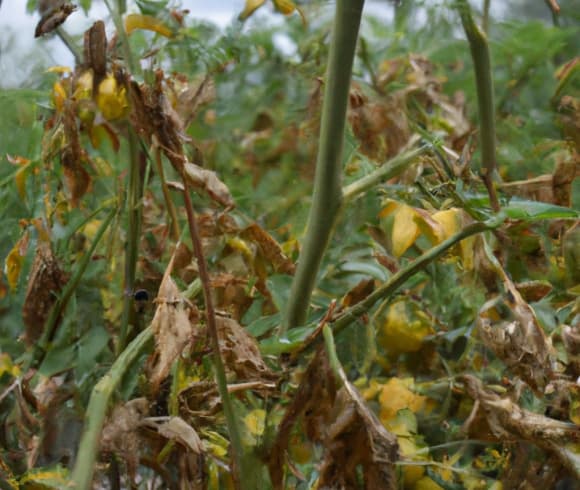
What are the resulting issues of over watering or under watering? The results can be eerily similar …
- Abnormal growth
- Rotting roots or root loss
- Reduced fruit production
- Pests & disease issues
- Fruiting issues (blossom end rot/cracking)
- Leaf problems (wilting/yellowing)
Understanding the tomato plant’s needs will help avoid over watering or under watering.
UNDERSTANDING TOMATOES NEEDS
Growing tomatoes that are hardy & highly productive can seem a bit daunting for some. After all, who doesn’t want to enjoy the very versatile tomato?
Tomatoes are probably the most popular crops to grow for any home gardener.
Why?
I feel it’s because of the increased variety available to grow, the high return with each harvest, and the relative ease of growing this fruit just about anywhere.
Sharing Is Caring ❤️
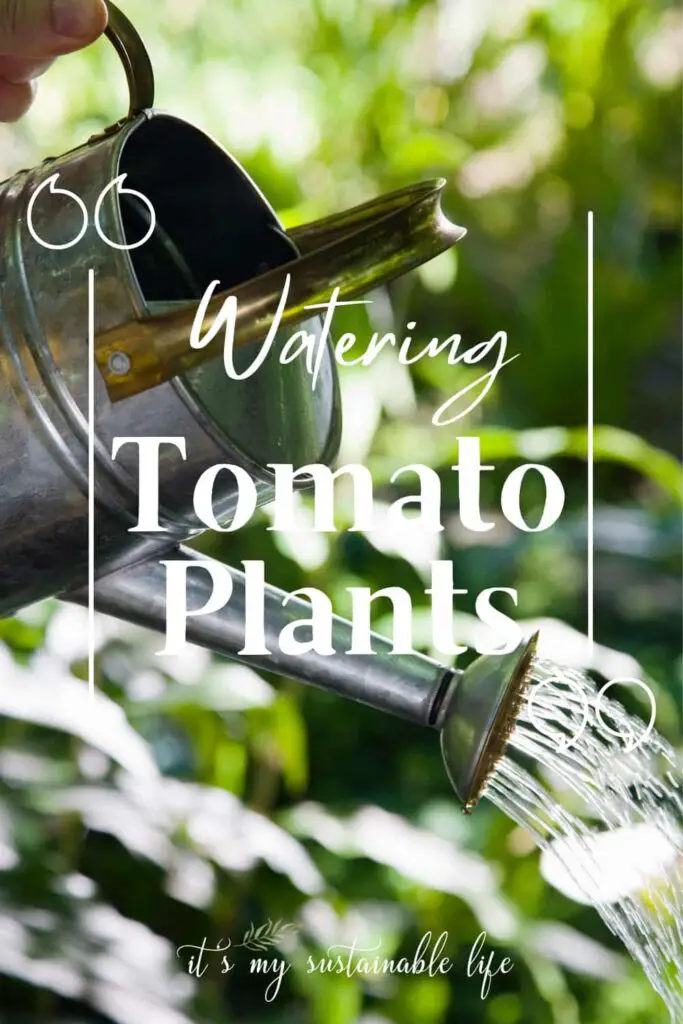
… and I thank you for it 🤗
Oh, and did I mention the taste? No purchased tomato can compete with a freshly harvested, still warm tomato right from the garden 🍅
Understanding the tomato plant’s needs can make it a bit less daunting when it comes to watering & care. Their needs are pretty simple when you break down the basics.
BASIC REQUIREMENTS FOR HEALTHY TOMATO PLANTS
Tomato plant’s, no matter the variety or how they are being grown (think containers, pots, in-ground, etc), all need the same basic requirements for optimal growth. And water is definitely one of them.
To ensure that your tomato plants receive the correct amount of water, it’s important to understand their hydration requirements and the factors that influence their water needs along with their other needs.
- HEAT – Tomatoes require heat to flourish. Germination temps between 68°F to 80°F are optimal, although can, under duress, germinate as low as 60°F. It will take much longer to do so, however. Once transplanted to their final home once soil temperatures reach a minimum of 60°F or warmer, an optimal heat range will be somewhere between 65°F to 75°F. Climate plays a significant role in determining the water requirements of tomato plants. In hot and dry climates, tomato plants will need more water than in cooler, more humid climates
- SOIL – I’ve said it many times, soil is a plant’s foundation. Whether they thrive or just survive is largely due to soil conditions. When it comes to growing tomatoes, optimal soil will have a pH range of 6.2 to 6.8. The type of soil in which your tomato plants are growing will also impact their water needs. Sandy soils drain quickly and may require more frequent watering, while heavy clay soils retain moisture and may require less watering. A well-draining soil mix will help prevent water from pooling in the soil and causing root rot
- SUN – Direct sun is your tomato plant’s best friend in most parts of the world. Extreme temps may require an adjustment to that rule, but for most, look to plant in full sun (6 to 8 hours/day), and try to orient them in rows planted from north to south as this will provide the plants with the most sun available. The more direct sun the plant’s receive, the more water they will likely require
- FERTILIZER – Feeding plants when needed is required for optimal fruit production. Be familiar with your plants, note any changes in leaf color or fruit issues and adjust as needed. Be sure to look at our article, “Growing Tomatoes Do’s And Don’ts” for a more in-depth look
- WATER – Tomatoes require consistent moisture in order to grow & produce well. That being said, knowing how much water the tomato plant needs during the different stages of growth, along with correct watering practices (watering times & approaches to watering) all contribute to growing a bumper crop
HOW MUCH WATER TOMATO PLANTS NEED
In most locales, tomato plants need at least 1 to 2 inches of water each week. The key here is locale.
By locale, I mean attention needs to be paid to the gardening zone in which you reside AND where & how you are growing your plants.
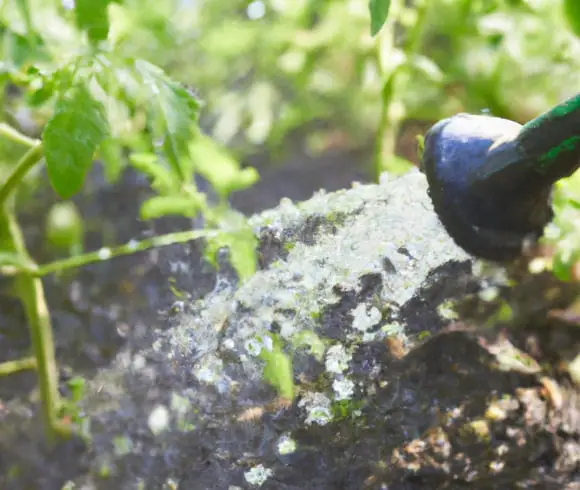
Watering ONLY when the plants need it is key. Checking the soil’s moisture levels by sticking your finger into the soil near the base of the plant, a good 1 to 2 inches in depth is a great way to check it. If the soil feels dry, it’s time to water.
DETERMINING WATER AMOUNTS
How do you figure out what equals 1 to 2 inches of water? It can get a bit confusing, but when it comes to gardening, “inches” is the standard method of measurement. A method we gardener’s need to understand.
When we measure water by inches, we are measuring by volume & by square feet.
A square foot is a 12” x 12” square section of space. Tomato plants can use up 3 to 4 square feet of space when fully mature.
Most gardener’s water by gallons. To convert inches of water to gallons, knowing that there are 144 cubic inches per square foot, we can easily convert …
- Say you want to convert 2 inches of water per week into gallons. To do so simply multiply 144 (cubic inches/square foot) by 2 = 288.
- Convert this amount from inches to gallons using this handy tool. 288 cubic inches = 1.2468 gallons.
- Round this number off = 1.25 gallons
- Should you prefer liters, you can use this tool to convert gallons to liters = 4.7 liters. Rounded would be 5 Liters
Another method which I find easier, is to take the cubic inches or area you are wanting to water, in this case (288) and dividing by 231. This will be the number of gallons needed per week. Daily that would work out to just under a quarter gallon per day, or half gallon every other day.
TOMATO PLANTS WATER NEEDS AT DIFFERENT GROWTH STAGES
How much and how you water tomato plants depends on the growth stage of the plant. Each growth stage requires a slightly different amount and approach to watering them.
Watch your tomato plants. They will speak to you and let you know when their watering schedule is off. And remember, water only when they require it, by following the signs of the soil.
WATERING NEEDS OF TOMATO SEEDLINGS
Starting any plant from seed requires a few foundational practices; soil, light, and water. When watering tomato plants in their early stages of life, it’s important to pay close attention to providing them with the right amount, the right way, and the right time.

Just planted seeds should be sown in moist soil. Soil that is damp to the touch & holds its shape when squeezed into a ball. Keep in mind that no water should drip from the “ball” of soil when squeezed.
The seeds will most likely enjoy a gentle spritzing of water every couple of days, especially when being grown in dry conditions such as I have during the winter months.
Please note the term “conditions” here. The environment in which you are growing your plants will vary greatly from mine. Care should be taken to note …
- Where. Where are the plants being grown? In a greenhouse, outside, indoors, in the cellar? The conditions of each area will affect how much water they require.
- Temperature. What’s the temperature of the area in which the plants are being grown?
- Soil. The soil in which you are using to germinate your plants will determine the amount of water needed and how often you will need to do so.
- Light. What kind of light is being used to grow the plants. Different light sources will once again affect how much and how often they will need to be watered.
Rely on the soil test for determining when watering is needed. Dry soil, water. Damp soil? No water needed.
Once the seeds have germinated, watering from the bottom up is recommended to keep disease at bay. Strive for the soil once again being that “just right” level of moisture. It should be consistently moist but not waterlogged.
Start with filling the tray only part way, give the soil time to wick up that moisture and reassess. Too wet? Too dry still? Just right? This process may take several tries to determine your level of just right.
Allow the soil to somewhat dry out between waterings. You don’t want the soil to become bone dry between waterings, however.
Watering consistency during this initial planting is key to success. The soil should remain moist but not overly damp with soil temps remaining right around 75°F (23°C).
WATERING NEEDS OF TOMATO PLANTS VEGETATIVE STAGE
Once the tomato plants have developed their first sets of true leaves and several sets of leaves beyond them, aka, the vegetative stage, you can alter the watering approach.
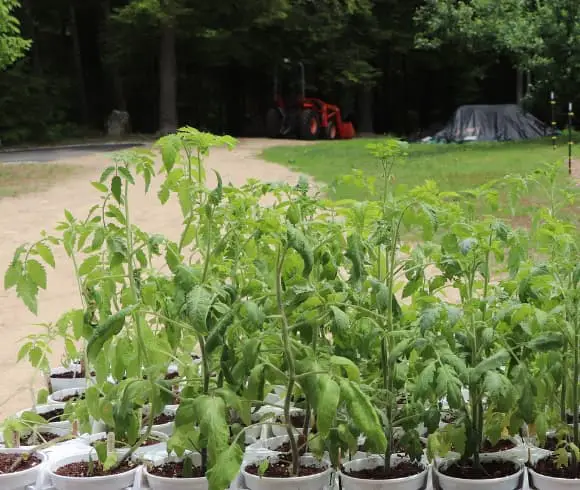
Once your plants have reached this stage, hopefully you will have transplanted them either into a larger growing pot, I have to do this as it’s still too cold to transplant into the garden, or into the garden.
During this state of growth, you can begin to carefully water from above. By this I mean watering where the stem meets the soil line, aka, the base of the plant.
The plant will require more water at this stage to support growth. Plan on 2 to 3 times per week, more often in dry/hot weather.
Care should be taken to water gently, making sure the water is reaching only the soil and not spraying up on the leaves.
Top watering, such as that of utilizing an overhead sprinkler, can not only lead to many health issues of the plant, think fungal diseases and pest issues, but also wastes water. Top watering leaves much of the water remaining on the leaves and evaporates, doing nothing to serve the plants water needs.
Young, established tomato plants in the vegetative stage require 1-2 inches of water per week. Once again, let the soil speak to you & watch the plant for any changes (yellowing leaves etc).
WATERING NEEDS DURING FRUIT-BEARING STAGE
As the tomato plant begins to produce fruit, you may find that the plant needs even more water. Increase incrementally, and watch for signs of distress or any unwanted changes.
Too much water once the fruit is fully formed can result in splitting or cracked skin.
Typically, this stage of growth will occur during the hottest time of the growing season. Watering 2 to 3 times per week, sometimes more than once per day is needed to support the plant’s thirst.
WATERING NEEDS DURING RIPENING STAGE
Once the fruit begins to head into its ripening stage, you can begin to reduce how often you water.
Why?
Tomatoes, the fruit itself, are about 90% water. To speed up the process of ripening, many will reduce the amount of water provided. This helps to direct the plant’s energy toward ripening what’s already growing instead of encouraging new growth.
Notice it’s recommended to REDUCE irrigating the plants, this doesn’t mean to stop watering altogether!
Pay close attention to rainfall amounts and reduce the water you provide back to the vegetative and fruit-bearing stage recommendations of 2 to 3 times per week or less.
WATERING NEEDS OF CONTAINER GROWN TOMATOES
Special care should be made for watering tomato plants being grown in containers. They will need more water than that of garden grown plants.
As the soil heats faster in containers, moisture evaporation will occur faster.
Plan to water freely until the water begins to drain from the bottom of the container. It’s not uncommon for container grown plants to need watering several times in one day! I recommend a good, thorough watering once in the morning and once in the evening.
Keep a close eye on the soil moisture levels, poking a finger in the top 1 to 2 inches of soil, when dry, water deeply once again.
TRACKING YOUR GARDENING EFFORTS
No matter what level of gardening you enjoy, if there is one piece of advice I can offer, track it all.
Keep records of everything. The successes, the failures, track it all, & even how often you watered your tomato plants!
How?
By creating a Garden Management Planning binder that you can use year-to-year and adjust to meet your needs!
Don’t have time to create your own? I’ve done it for you 🤗
Grab your copy by clicking the image below 👇🏻👇🏻👇🏻
Cost-effective, reusable, and pretty cute if I say so myself 😊
TOP WATERING TIPS FOR TOMATO PLANTS
Water needs to reach the tomato plant’s root system for it to be effective and encourage proper growth.
By focusing on these top watering tips for tomato plants, you can be sure the plant will receive the water you give it as effectively as possible.
HOW OFTEN TO WATER TOMATO PLANTS
Watering at regular, consistent intervals, cannot be stressed enough. Although there is no one rule for how often to water tomato plants, putting your senses on the alert can mean the difference between a healthy plant and one that’s struggling.
Generally, you can plan on watering at least once per day every few days during the height of the growing season. That is unless water is provided naturally by rain. ANY water from ANY source will count toward that 1 to 2 inches of water per week required.
During excessive heat periods, you most likely may need to increase how often to water them.
Once fruit has set and is growing well, you will want to reduce the number of times you water back to only once a week or so.
Remember, water the plants when they need it, not according to our own schedule. Always check the soil by either a finger poke into the top 1 to 2 inches or by using a moisture meter.
A moisture meter can help you determine the exact moisture content of the soil and ensure that you are not underwatering or overwatering your plants.
BEST TIME OF DAY TO WATER TOMATO PLANTS
Early morning is a great time to water. By doing so, you can be sure that any moisture which has remained on leaves will quickly evaporate before the heat of the day. This can help prevent risk of disease, burn issues, & more.
Watering the plants at night can and will most likely result with issues such as fungal, blossom end rot, and reduced fruit production.
WATER SLOW
When plants are watered too quickly or too much at one time, the water will not be absorbed by the roots where it’s needed as the soil will not be able to penetrate the soil efficiently. This runoff of water not only wastes the water intended for the plant, but also may leach nutrients from the soil, wicking them away from where they are needed most.
When you water slowly, the soil will absorb the supply of water, sufficiently saturating the soil so that the root system may absorb the water it needs.
Aim for saturating the top 5 to 6 inches of soil so that it’s sufficiently moist.
WATER THE ROOTS
Water where the roots are, where the stem meets the soil, at the base of the plant. I like to water around and away from the stem, trying to avoid hitting the stem, so that the roots are encouraged to spread toward the watering line.
Avoid watering from above with sprinkler systems and the like. As discussed prior, this will only encourage disease & pest issues.
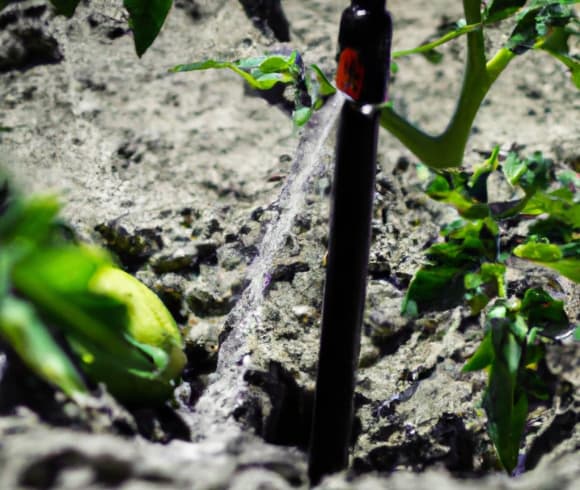
When growing a LOT of plants, using an irrigation drip line or soaker hose will make quick work of watering slowly, aiming the water toward the root system only. This small drip irrigation kit would get you started nicely. These systems are one’s I highly recommend and are well worth the initial investment.
WATER DEEPLY
It’s important to water deeply and thoroughly to encourage the roots to grow deep into the soil. This also helps to prevent water stress and encourages fruit production.
Often the difference between a plant that’s just surviving and one that is healthy is not only what can be seen above soil level, but it’s what is happening below. Encouraging a strong root system is one way to grow a plant that’s productive.
By watering deeply the soil absorbs the water more readily which in turn offers the plant, via the root system, not only the moisture it needs but also the nutrients.
Strive for watering to a depth of about 5 to 6 inches.
MULCH FOR WATER RETENTION
Conserving water should be on everyone’s radar. It’s an invaluable resource, and one that’s in jeopardy.
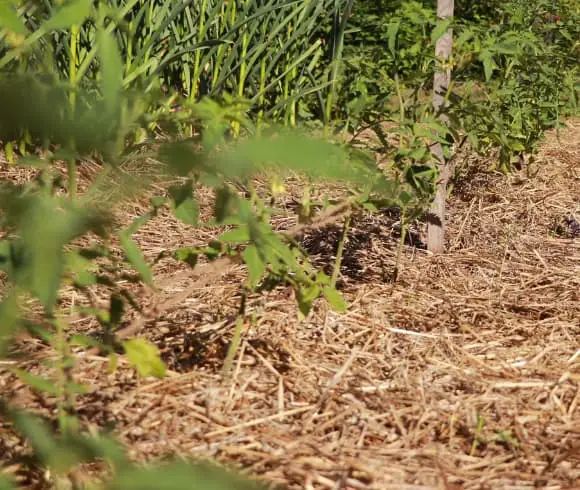
Mulching, the act of covering the soil with a protective layer of product (think sawdust, straw or hay, leaves, paper etc), helps with moisture evaporation, helps prevent water splash on the plant itself, maintains a more consistent soil temperature, reduces erosion, & supports weed control.
Layering mulch at a depth of about 2 inches around the base (but not touching the stem) will ultimately save water and time.
MAINTAINING A WATERING SCHEDULE WHILE AWAY
So you want a vacay? Me too 😅 Maintaining a watering schedule so that you remain consistent in watering your plants while away and not come back to, well, dead plants, can be a challenge.
Here are a couple suggestions …
- Ask a neighbor. If you are fortunate, you’ll have a neighbor, friend, or family member who would be happy to water & lend a hand. Especially, if they can enjoy the fruits of their labors as well 🍅
- Programmers. Drip irrigation system programmers are pretty inexpensive and easy to install and use.
RECOGNIZING WARNING SIGNS OF OVERWATERING
Too much of a good thing can be as detrimental as not enough when it comes to watering. Especially with tomato plants.
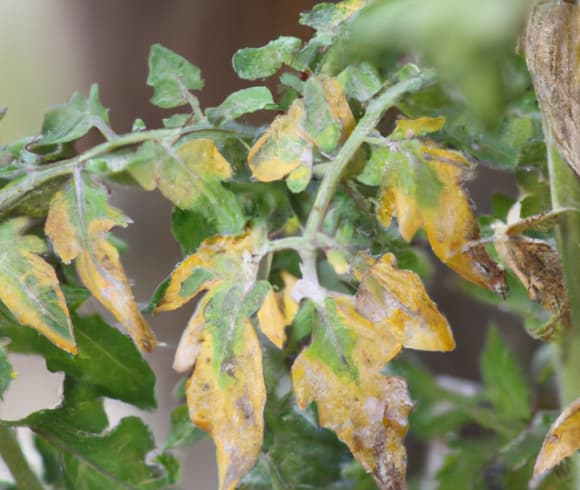
Overwatering can have negative effects on the growth and health of tomato plants, and it’s important to recognize the warning signs so that we can quickly take corrective action.
- Yellowing Leaves – One of the most common signs of overwatering in tomato plants is yellowing leaves. This is because the excess water in the soil prevents the roots from absorbing the necessary oxygen, leading to chlorosis or yellowing of the leaves
- Stunted Growth – Overwatered tomato plants may also experience stunted growth, as the roots are unable to absorb the necessary nutrients and water from the soil
- Wilting – Another sign of overwatering is wilting leaves. This occurs when the plant is unable to absorb the water from the soil, causing the leaves to wilt. However, it’s important to note that wilting can also occur due to underwatering, so it’s essential to check the soil moisture level to determine the cause
- Root Rot – Root rot is another common issue of overwatering. This occurs when the roots are unable to breathe and become infected with fungi and bacteria which causes the roots to rot, leading to its ultimate demise
- Fruit Rot – Overwatered tomato plants are also more susceptible to fruit rot, as the excess water in the soil can cause the fruit to rot
- Fungal Diseases – Overwatered tomato plants are more susceptible to fungal diseases, such as early blight and late blight. This is because the excess water creates a favorable environment for the growth of fungi and bacteria
FINAL THOUGHTS ON HOW OFTEN TO WATER TOMATO PLANTS
Watering tomato plants does require a bit of attention and care. But by doing so & following the guidelines listed, you can be sure that your tomato plants will receive the right amount of water to grow and produce healthy fruit.
Remember, use the appropriate soil, check the soil moisture (finger poke) before watering, water only when needed, water from the base, avoiding contact with the leaves and stem, use a drip irrigation system or soaker hose when possible, and water deeply & in the early morning hours.
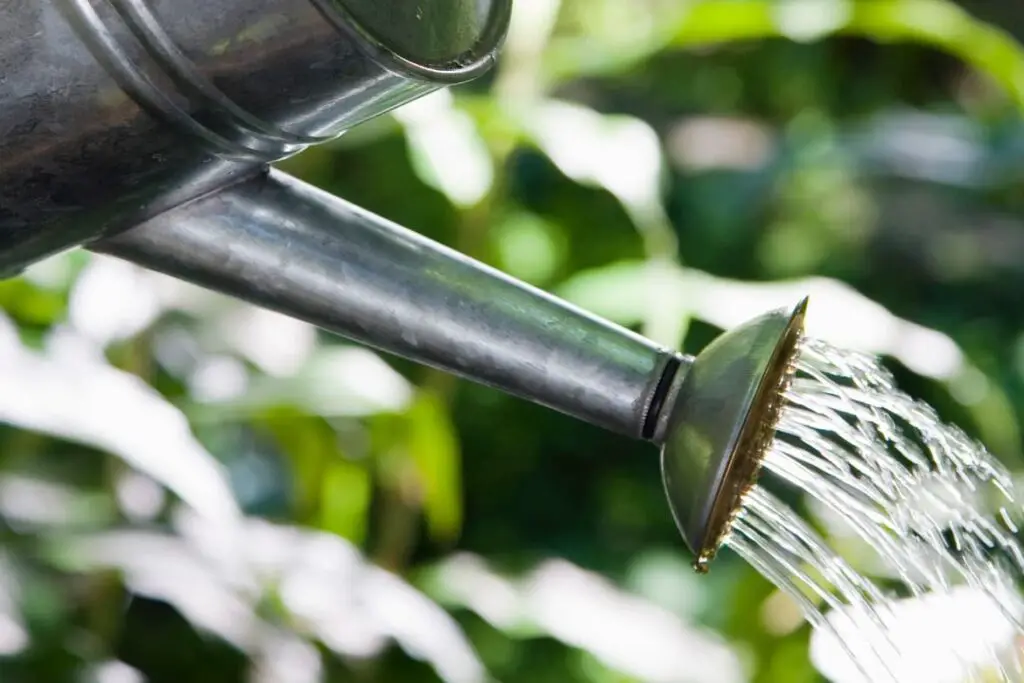
The exact amount of water your plants will require will vary from mine. Hopefully these guidelines and tips for what to watch for will help you find the “just right” amount of water your plants need 🤗
Fortunately, with experience comes knowledge. Knowledge that will help you discover the watering schedule which works for you, and the intuition for how often to water tomato plants will come naturally.
Love, Light, & Laughter ~

SHOP THE FAVORITES
INTERESTED IN MORE GARDENING TIPS?
How To Test Seeds Viability (Plus Seed Viability Chart)

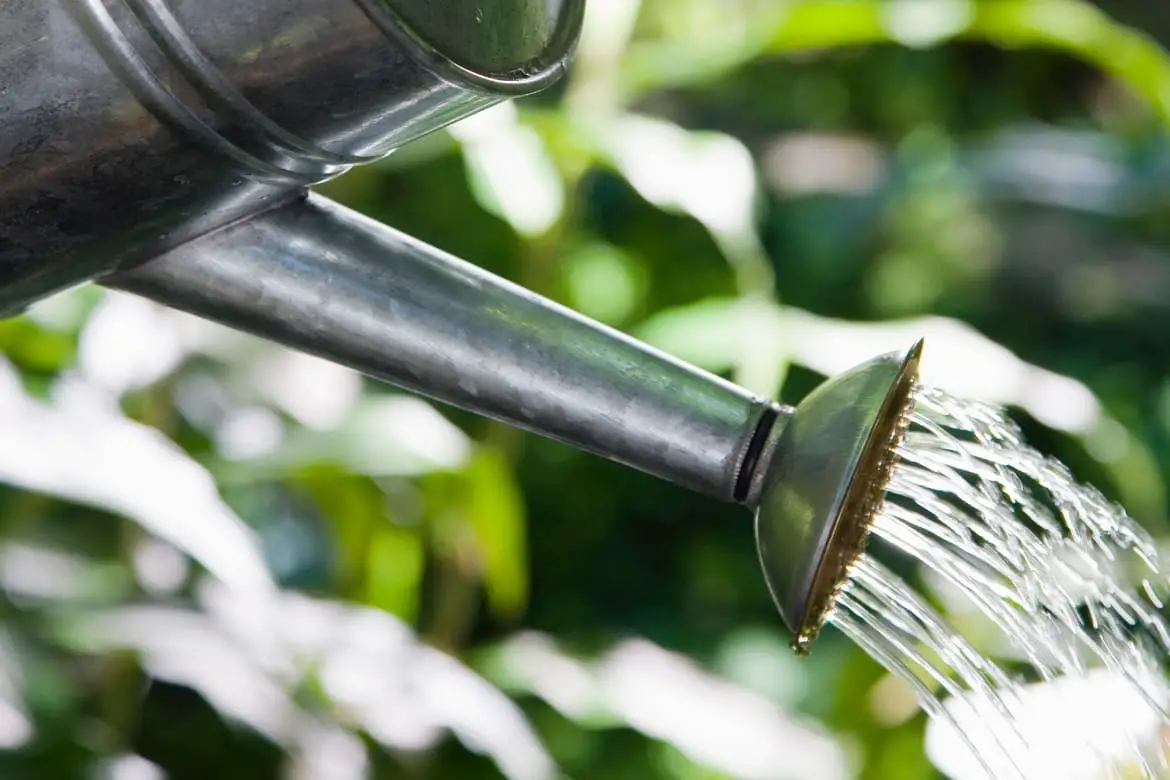

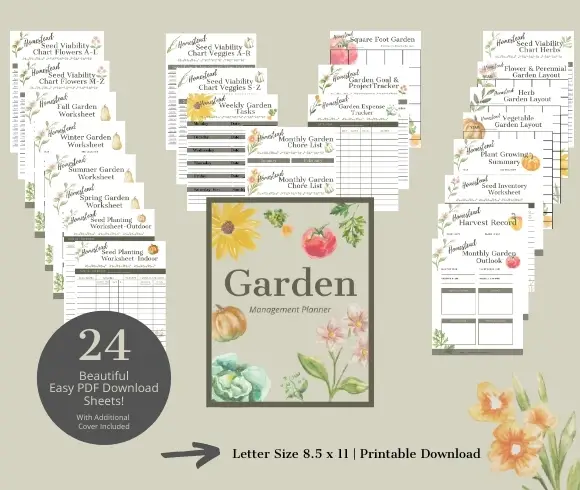
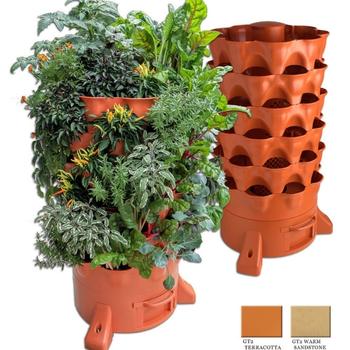
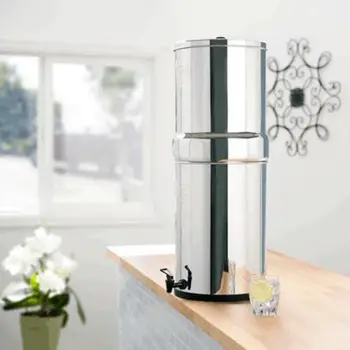

13 comments
Great information in this post! Tomatoes make up the majority of our garden and knowing proper watering guidelines is so important!
Great resource for watering and caring for tomato plants! We had such an excessively hot summer last year that tomato plants didn’t produce well last year.
Great information on how often to water tomato plants. Thank you for sharing.
Great information on how often to water tomato plants. Very helpful for this beginner.
Great advice for watering tomato plants. Some years, I have patio cherry tomatoes. I watered them in the evening, but morning does sound like a better idea. I may have to give that a try this summer. Thanks for the info!
I like the way you suggest tracking how often to water tomato plants, then you’d get an idea of what suits the locale where you live. And, to watch for all the signs of overwatering is helpful.
Tomato plants have been the one plant that I’ve successfully grown consistently. I mostly do container gardening when I do garden and had no idea that containers need more watering. I will definitely use the tip of watering my containers both in the morning and in the evening when I grow some tomato plants this season.
Growing tomato plants are my favorite! I like them in salad and salsa as well. These are fantastic tips for watering!
I usually find myself not keeping track of how often to water my tomato plants — and all the others for that matter. I’m sure they would thrive if I was more consistent.
I come from a long line of farmers and we always had a garden growing up. There’s nothing better than tomatoes from your own backyard. This is a great guide on how often to water tomato plants.
Very useful and informative article on how often to water tomato plants! I don’t have a garden where I live now, but for a while in California I had a large garden bed for veggies and tomatoes…they did great for a while, but I do think I over watered them (I have a tendency to do this). I really appreciate this info because I’ll be referring back to it once I get my garden growing again!
I’ve always wondered how often to water tomatoes as I usually have a heavy hand when it comes to watering. I learned a lot of new things I didn’t know from this article so thank you very much!
My tomato plants didn’t do too well last year so I appreciate this information.